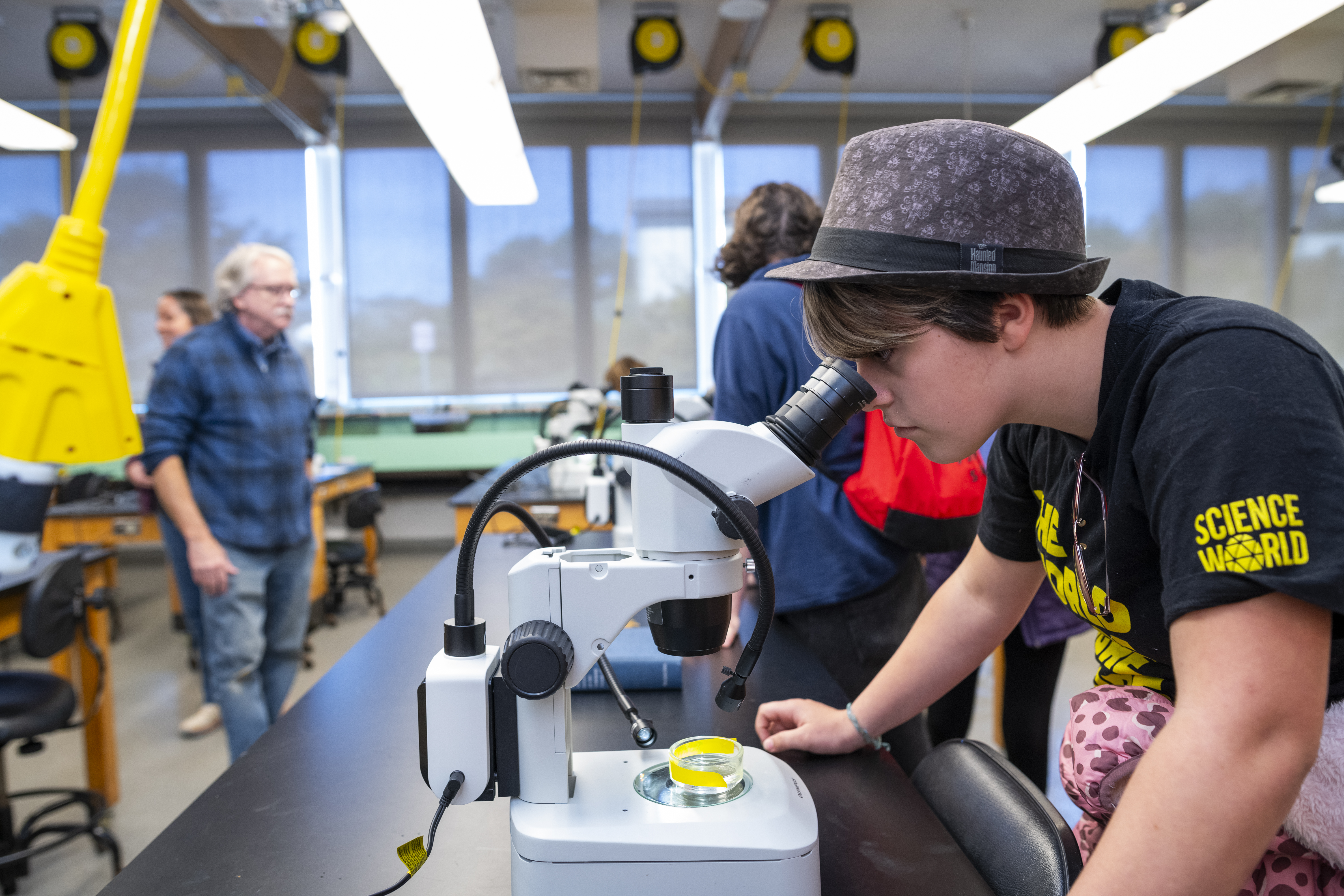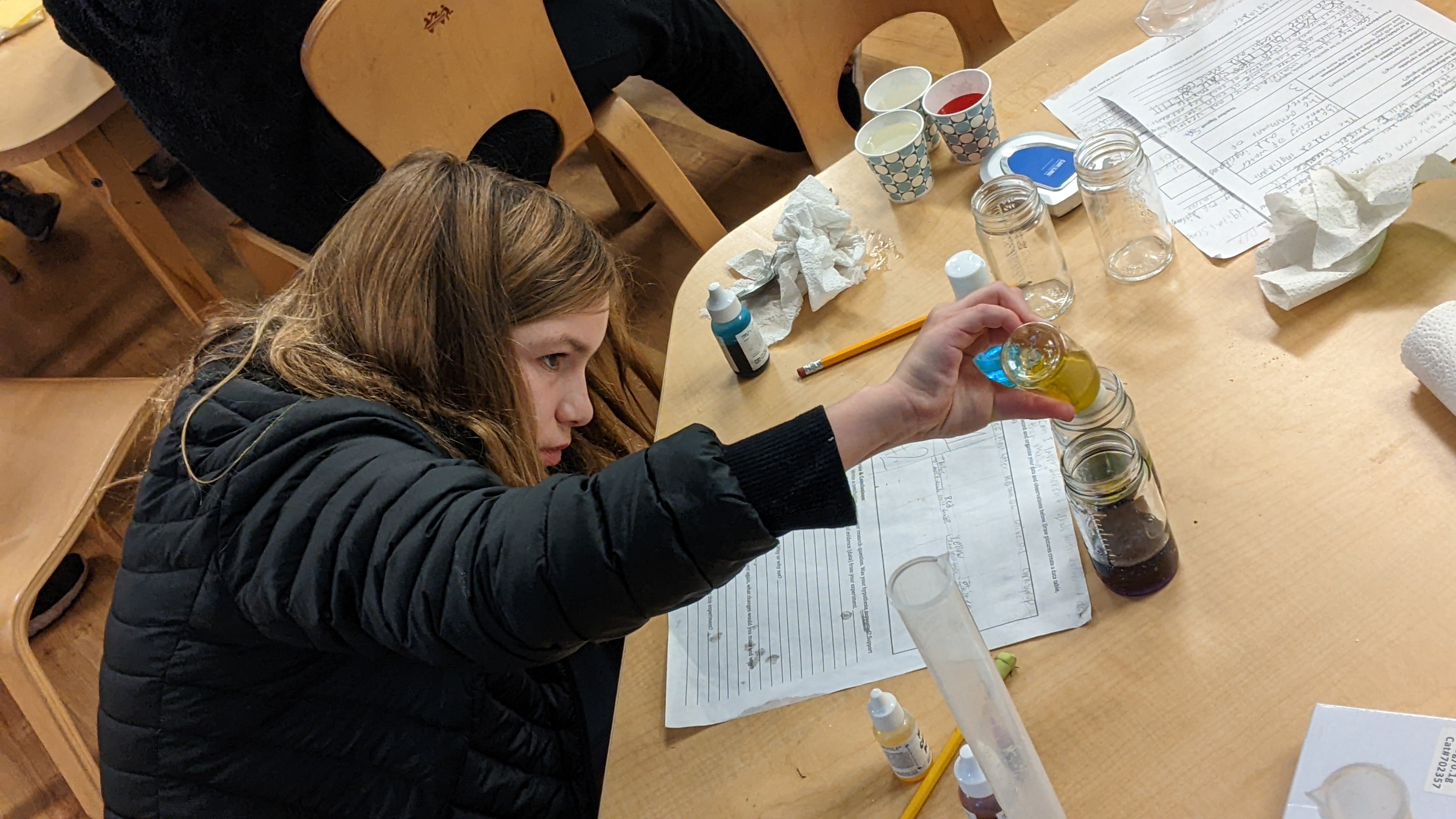The standard course sequence at NPA offers students opportunities for strong foundational preparation in mathematics, biology, chemistry, physics, and environmental systems.
Approximately 65% of NPA graduates pursue science-related careers, including careers in microbiology, environmental science, medicine, physics, engineering, and computer science.
The typical course sequence for science-focused students is as follows:
6th Grade
- Integrated Math 1-2
- Math Club
- MathCounts
- Math Honors
- Integrated Science
- Science Project/ Science Fair
- In the 6th Grade Sciences at NPA, students start with the scientific method and the engineering design cycle, then move into measurement, tools and lab skills with mass, density, and volume. In the winter students study cells and learn proper microscope use. Then, students scale up in the organization of living things going from cells to organisms to ecosystems. The study of organisms includes taxonomy and adaptations with a special focus on the marine species of Humboldt County. Finally, the year culminates in the study of tidepools and kelp forest ecosystems including a field trip to one of the local beaches and the Cal Poly Humboldt Marine Lab.
7th Grade
- Integrated Math 2-3
- Math Club
- MathCounts
- Math Honors
- Integrated Science
- Science Project/ Science Fair
-
In 7th Grade Science, students begin by revisiting the scientific method with emphasis on experimental design. The next unit focuses on geology, the Earth’s interior, and plate tectonics with additional time discussing the plate tectonics of Humboldt County’s region and earthquake preparedness. In the winter the course transitions to the study of human anatomy with an emphasis on how organ systems work together. This study covers several organ systems as well as introduce dissection safety and techniques. In the spring, 7th grade students explore physics through motion, forces, Newton’s laws, and kinetic and potential energy. The final project is the NPA mini-Kinetic Sculpture Race in which students use the engineering design process to create a miniature kinetic sculpture that demonstrates the semester’s physics concepts.
8th Grade
- Integrated Math 3-4
- Math Club
- MathCounts
- Math Honors
- Integrated Science
- Science Project/ Science Fair
- 8th Grade Science follows the storyline of atoms and elements-how they came to be (astronomy), how they interact (chemistry), and how humans impact them (climate change). The unit study starts at the very beginning with the formation of all matter and energy in the Universe. Students explore the formations of first atoms and elements in stars which leads us to our study of Chemistry. Students begin chemistry puzzling out the Periodic Table of Elements, atoms and atomic bonds before moving into chemical reactions. In the spring, the chemical reactions unit is hands-on, with students completing labs that demonstrate our core Chemistry concepts. Our year ends with Climate Change and human impacts. We make this transition by looking at the chemistry of carbon dioxide and then explore the impacts of Climate Change, as well as how people are addressing the issue globally and locally.
Additionally, throughout the year NPA Middle School Science has the unique traditions of joining in Fat Bear Week and March Mammal Madness for all Science classes. Students may also participate in the Humboldt County Science Fair, with many of our students winning awards for their projects. Lastly, as 8th Years, students have the option of joining the Tidepool Monitoring Group. This group, created by former students, monitors a local beach to explore how purple sea urchins affect biodiversity.

9th Grade
- Integrated Algebra II
- Life Science with Chemistry
- Natural History of the Humboldt Area
10th Grade
- Trigonometry and Pre-Calculus (with added topic areas)
- AP Chemistry
11th and 12th Grade
- IB Mathematics Standard Level (SL) or Higher Level (HL)
- IB Biology SL/HL
- IB Physics SL/HL
-
At NPA High School we are an International Baccalaureate (I.B.) school. Our Physics courses reflect the curriculum widely studied across the world and primarily in Europe. If you are considering studying overseas for college, this program is an excellent way to increase your chances of gaining admission to those exclusive foreign universities, while also meeting the most rigorous requirements for universities in the United States. The I.B. Physics curriculum focuses on a much broader set of sub-disciplines than the AP Physics curriculum which focuses solely on Newtonian Mechanics. In I.B. Physics, the year starts off with Newtonian Mechanics and then branches out into Thermodynamics, Circuits and Electrostatics/dynamics, basic Field Theory, and finally Nuclear Physics and Astrophysics. If you are passionate about Science, this unique course offering will cover a much wider breadth of topics than any other high school physics classes offered locally on the North Coast.


